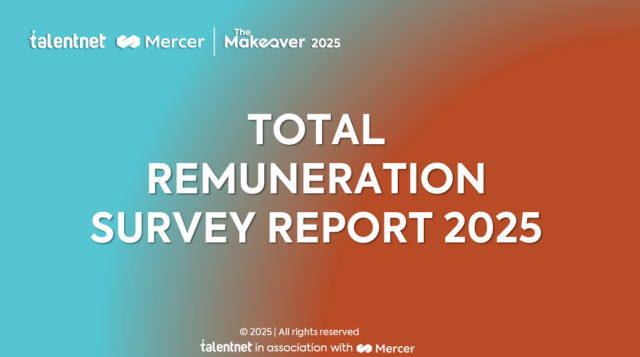What Can Vietnamese Factories Learn From Global HR Practices?

May 28, 2025
Last updated on Jun 13, 2025
Vietnamese factories can grow fast and compete globally by using proven global HR practices. It's time to stop seeing HR as just a support function. Instead, use its power as the main driver of great operations and stronger workers. This shift makes the difference between small improvements and big wins that put Vietnamese manufacturing ahead worldwide.

Key takeaways
- Vietnamese factories must elevate HR from administrative support to strategic driver of lean transformation for breakthrough performance gains.
- Success requires complete talent system redesign—from recruitment and performance management to compensation—that actively reinforces lean behaviors.
- Multi-level training programs and leadership development create the foundation for sustainable continuous improvement cultures where employees drive innovation.
- Data-driven HR practices and technology integration prepare organizations for “Lean 4.0” while measuring direct impact on manufacturing outcomes.
Vietnamese manufacturing faces a critical choice: continue with traditional HR approaches that treat people as costs, or embrace strategic HR practices that unlock extraordinary performance gains. Global manufacturing leaders from Toyota to Nike have proven that HR-driven lean transformation delivers productivity improvements while solving workforce challenges that plague the industry. For Vietnamese CEOs, this represents more than operational improvement—it’s the pathway to building world-class manufacturing capabilities that can compete on any global stage.
Elevate HR to a dual role: model lean internally, drive it externally
The transformation begins with HR proving its lean capabilities through internal excellence before expanding influence across manufacturing operations. This dual approach creates the credibility and expertise needed to drive change throughout the organization.
HR departments must apply lean thinking to make their own processes better—recruitment, onboarding, performance management, and employee services. Companies that use lean manufacturing in their HR processes get big efficiency gains. Some cut onboarding time from 17 days to under 10 days—a 44% improvement. This internal success gives HR real experience with lean challenges and benefits, creating authentic expertise that works when helping manufacturing operations change.
The process means finding and removing eight types of waste in HR:
- Overprocessing
- Waiting
- Defects
- Transportation
- Inventory
- Motion
- Overproduction
- Duplication
For Vietnamese factories, this might mean automated candidate screening, digital onboarding platforms, and self-service portals that cut paperwork while improving employee experience.
Once HR masters lean internally, it gains the trust and practical knowledge to help lean transformation across the whole factory. This makes HR a strategic partner, not just an admin unit, letting HR really contribute to manufacturing excellence initiatives. The change requires HR professionals to understand operational challenges deeply, work closely with production teams, and connect lean methods with workforce development. This strategic elevation changes HR from a reactive support function to an active driver of organizational capability, directly contributing to competitive advantage through people-centered continuous improvement.
Make people development a central pillar of your lean strategy
Global leaders recognize that sustainable competitive advantage flows from treating workforce capability as the primary organizational asset rather than a secondary consideration. This represents a fundamental shift from viewing employees as costs to recognizing them as strategic investments.
Toyota’s research shows the company believes lean management needs more developed people and deeper trust than mass production systems, making people the most critical part of the system. Unlike traditional companies where HR just processes paperwork, Toyota sees people development as key to competitive success.
The Toyota model has several key features Vietnamese factories can copy:
- Managing directors and VPs regularly work in HR
- Deep integration between operations and people development
- Cross-functional approach building complete understanding
- Direct connection between workforce capabilities and operational excellence
Toyota’s success comes from carefully selecting and developing people over long periods. This lets them continuously improve processes and ultimately lead to competitive advantage and mutual prosperity. This differs from short-term lean programs that assume the right tools used by expertly trained individuals will dramatically improve business performance quickly.
For Vietnamese manufacturers, this means changing HR functions to focus on people development rather than administrative processing, investing in complete skill-building programs, and creating career paths that reward continuous improvement leadership alongside technical skills. The investment pays off through sustained performance improvements that compound over time.

Align talent management systems to foster lean behaviors
Every talent touchpoint—from first interview to final promotion—must actively reinforce the behaviors that drive manufacturing excellence. This systematic approach ensures consistency across all employee interactions and builds a unified culture of continuous improvement.
Good recruitment in lean manufacturing needs basic shifts from purely technical skill-based hiring to complete approaches emphasizing problem-solving abilities, collaborative mindsets, and continuous improvement orientation. Traditional hiring practices often fail to identify candidates who thrive in lean environments where teamwork, adaptability, and systems thinking prove essential for success.
Best practice recruitment strategies involve:
- Developing standard job descriptions that clearly state lean competencies alongside technical requirements
- Creating behavioral interview protocols that assess candidates’ experience with continuous improvement
- Evaluating problem-solving approaches and team-based work ability
- Prioritizing these characteristics while maintaining necessary technical standards
Performance management must align with these hiring practices to reinforce the same values throughout the employee lifecycle. Traditional performance management systems often conflict with lean principles by rewarding individual performance over teamwork and firefighting behaviors over systematic improvement. Lean manufacturing requires performance systems aligned with collaborative problem-solving, continuous improvement, and long-term value creation rather than short-term individual achievements.
Best practice performance management involves redesigning evaluation criteria to include lean behaviors such as participation in improvement projects, collaboration effectiveness, and contributions to waste elimination efforts. This requires updating job descriptions to emphasize continuous improvement responsibilities and adjusting compensation plans to include team-based incentives for quality targets and improvement initiatives.
Compensation and incentive design may need major overhaul as leaders redefine “star performer” definitions. While traditionally star performers excelled mainly at specialized skills—whether writing software code, answering customer calls, or selling products—star performers in lean organizations excel at developing others and solving problems alongside technical job requirements. This evolution means moving toward compensation plans emphasizing team and company performance rather than individual metrics. One emerging-market bank now uses individual performance metrics solely for assessing development needs, with compensation entirely based on group- and company-wide metrics—creating powerful incentives for high performers to coach lower-performing peers.
Invest in multi-level lean training and empowering leadership development
Building lean capability requires systematic skill development at every organizational level, from frontline workers to senior executives. This comprehensive approach ensures that lean principles take root throughout the organization rather than remaining isolated in specific departments.
Developing structured learning pathways from basic lean awareness for all employees to advanced problem-solving capabilities for production teams and lean leadership skills for supervisors creates organizational capability depth. Nike’s global lean supply chain initiative demonstrates this complete approach effectiveness by establishing a dedicated lean training center in Vietnam and involving HR and training teams in educating both factory managers and Nike staff.
Training effectiveness requires measuring both knowledge acquisition and behavioral change, with organizations implementing lean six sigma approaches achieving significant improvements. Effective leadership training for manufacturing supervisors ensures development investments produce measurable operational performance returns.
Leadership development proves especially critical because it creates the cultural foundation for sustained lean success. Leadership development in lean manufacturing environments must focus on creating managers who facilitate continuous improvement rather than simply directing operations. This requires complete training programs addressing both technical lean methods and cultural mindset changes necessary for sustained success.
Modern global HR trends emphasize developing next generation leaders who can navigate both traditional manufacturing challenges and emerging Industry 4.0 requirements. This forward-thinking approach ensures that leadership capabilities evolve with technological and market demands.
Foster a culture of continuous improvement driven by employee ownership
True lean transformation occurs when employees become active improvement agents rather than passive recipients of management directives. This cultural shift represents the most challenging yet most rewarding aspect of lean implementation.
Creating a sustainable continuous improvement culture requires Vietnamese factories to move beyond tool-based approaches toward complete cultural transformation involving psychological safety where employees feel comfortable surfacing problems and suggesting improvements without fear of negative consequences. HR departments must act as guardians of this trust, ensuring lean behaviors receive rewards rather than punishment and improvement suggestions receive serious consideration and implementation support.
Cochlear, with daily production increasing from thirty-five electrodes in 2006 to 120 electrodes in 2009 and 150 in 2012—more than quadrupling productivity through strategic combination of lean manufacturing and HR innovations. The company invested significantly in production employees through operational training, English language training, and leadership skills training for team leaders, leading to increased problem solving from direct operators and increased employee responsibility for departmental performance.
Building this culture requires more than training programs—it demands fundamental changes in how the organization operates daily. Cultural transformation requires aligning organizational systems with lean principles through visual management systems highlighting problems and improvement opportunities, while daily management processes create regular opportunities for problem-solving and knowledge sharing. Vietnamese manufacturers can leverage strong cultural traditions of respect and collective responsibility by framing continuous improvement as contributing to group success rather than individual achievement.
The cultural change process must be supported by clear communication strategies and effective change management approaches, with HR leaders working closely with operations teams to ensure lean-driven restructuring minimizes workforce disruption while maintaining engagement throughout transformation periods. Success depends on consistent reinforcement of new behaviors through recognition, communication, and leadership modeling.

Implement data-driven HR practices to measure and enhance lean effectiveness
Modern lean success demands measurable connections between people practices and operational outcomes, moving beyond intuition to evidence-based workforce optimization. This analytical approach transforms HR from a cost center into a measurable contributor to business results.
Data-driven decision making becomes essential for HR departments supporting lean manufacturing operations. HR analytics provides insights into labor cost drivers, workforce scheduling optimization, and employee performance patterns directly impacting manufacturing efficiency and quality outcomes.
Effective analytics implementation involves tracking key performance indicators aligned with lean manufacturing objectives:
- Cycle time for HR processes
- Defect rates in HR service delivery
- Voluntary turnover rates
- First-call resolution for HR help desk services
These metrics provide objective measures of HR effectiveness while identifying opportunities for process improvement, enabling sophisticated analysis without requiring extensive data science expertise. Strategic workforce planning strategies integrate these analytics to create more responsive and effective talent management systems.
The measurement approach must extend beyond simple metrics to encompass continuous improvement of HR processes themselves. Process optimization in lean HR involves applying systematic improvement methods used in manufacturing operations to HR processes, including value stream mapping, 5S methodology, and kaizen events specifically focused on HR service delivery and administrative efficiency. Regular process audits help identify improvement opportunities while ensuring HR operations maintain efficiency and quality standards expected throughout lean manufacturing organizations.
The continuous improvement mindset must extend beyond individual processes to encompass the entire HR function’s contribution to organizational objectives, requiring feedback loops connecting HR performance to manufacturing outcomes while creating systems for rapid implementation of process improvements. This creates a virtuous cycle where better HR processes directly contribute to better manufacturing results, which in turn justify further investment in HR capabilities.
Strategically integrate technology for HR efficiency and “Lean 4.0” readiness
Technology integration prepares Vietnamese manufacturers for the digital future while optimizing current HR operations for maximum strategic impact. This dual focus ensures immediate efficiency gains while building capabilities for future competitive advantage.
Technology integration becomes essential for HR departments supporting lean manufacturing operations, enabling automation of routine tasks while freeing HR professionals to focus on strategic initiatives. Modern HR platforms integrating seamlessly with existing technology stacks help consolidate workflows while reducing costs and maximizing impact on organizational performance.
Best practice technology implementation involves selecting systems supporting both efficiency gains and improved employee experience, including:
- Automated candidate screening systems
- Digital onboarding platforms
- Self-service portals reducing administrative burden
- Immediate employee access to HR services
The goal involves creating HR technology ecosystems operating with the same efficiency standards expected in lean manufacturing operations.
Looking ahead, Vietnamese manufacturers must prepare for convergence of lean practices with Industry 4.0 technologies and sustainability requirements, often termed “Lean 4.0.” This evolution requires HR departments ensuring workforces receive training for IoT, data analytics, and automation while maintaining lean’s human-centered improvement culture. The challenge involves recruiting tech-savvy talent while providing digital training to existing production staff, requiring sophisticated succession planning ensuring knowledge transfer and continuity.
Environmental training now integrates with lean workshops to build capability for combined “lean-digital-green” transformation models increasingly demanded by customers and regulators. Vietnamese manufacturers must prepare workforces for sustainability reporting requirements, energy management systems, and circular economy principles while maintaining focus on waste elimination and efficiency improvement characterizing traditional lean approaches. Building a green workforce strategy becomes essential for future competitiveness.
Technology also enables organizational learning capabilities that support rapid adaptation to changing market conditions and customer requirements through knowledge management systems capturing and sharing improvement insights across teams and facilities. HR departments play crucial roles facilitating knowledge transfer, documenting best practices, and developing internal expertise reducing dependence on external support.
Effective organizational learning requires establishing communities of practice connecting lean practitioners across different departments and facilities, enabling rapid sharing of problem-solving approaches, successful improvement techniques, and lessons learned from implementation challenges. Modern manufacturing workforce models incorporate these knowledge-sharing capabilities as core competitive advantages.
The future of competitive manufacturing in Vietnam lies in strategic lean transformation, with HR serving as the primary engine driving that evolution. By adopting these globally-proven lean workforce strategies and global HR practices, Vietnamese factories can enhance operational efficiency while building highly engaged, skilled, and adaptive workforces. CEOs and senior leaders must now collaboratively champion this transformation, investing in systems, training, and cultural shifts necessary for success. Professional HR consulting services can accelerate this journey by providing expert guidance and proven methodologies for sustainable transformation.

Solve your HR problems!
6th Floor, Star Building, 33 Mac Dinh Chi, Saigon Ward, Ho Chi Minh city, Vietnam




